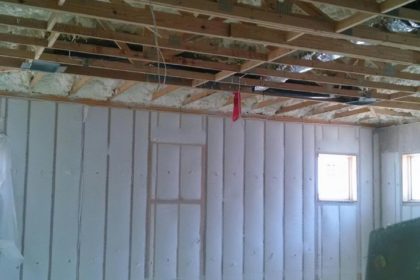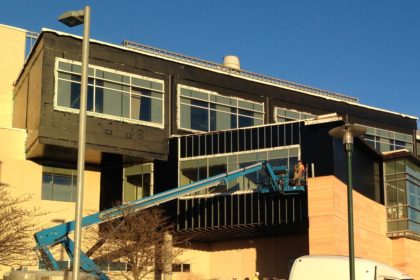

OVERVIEW
There is quite a bit of confusion about Air and Vapor barriers. Air barrier materials are used anywhere in a building assembly to stop the movement of air into or out of the conditioned space. Vapor barriers materials used to slow or reduce the movement of water vapor through a material. Moisture barriers (like Tyvek, for example) are installed on the exterior of home or building, directly on top of the sheathing, and under the siding. Moisture barriers help prevent water from entering the wall cavity.
You need to understand the separate functions that the materials may provide and then determine whether the specific material you choose provides more than one function. For example, Spray Foam Insulation can be an air, vapor and moisture barrier. On the other hand, blown in insulation is great as an air barrier but needs to be paired with the appropriate moisture or vapor barrier to maximize performance.
It is critical that air, vapor and moisture barriers work together to improve performance. A full complete insulation plan must be developed to avoid issues and maximize your investment.
BENEFITS OF AIR AND VAPOR BARRIERS
The main benefit of an Air Barrier is to keep the air in it’s desired location. During the summer it keeps warm air out and cool air in. Air Barriers can also can be used to keep gas, smoke and other undesirable air quality issues out of your home or business.
Vapor barriers keep moisture out of the walls of your home and business. Moisture in the air in the form of vapor is transferred along with heat. This is especially common in humid environments and in certain areas inside a home or building such as bathrooms, kitchens and laundry facilities. When moisture vapor becomes trapped, mold and mildew growth can result.
Moisture barriers (like Tyvek, for example) are installed on the exterior of a home or building, directly on top of the sheathing, and under the siding. Moisture barriers help prevent water from entering the wall cavity.
You need to understand the separate functions that the materials may provide and then determine whether the specific material you choose provides more than one function.
COMMON QUESTIONS
Do I need Air, Vapor and Moisture Barriers?
Homes and buildings in this area typically use materials that do act as air, vapor and moisture barriers. Depending on the situation, it may also be important to install air and vapor barriers on interior walls in addition to the exterior ones.
My builder installed a plastic type wrap under my siding, so I already have an air barrier — right?
Not necessarily. Although Tyvek and other brands of plastic housewrap are sometimes marketed as air barrier materials, the primary function of housewrap is to act as a moisture barrier in case rain or other moisture slips past your siding. Depending on the situation, additional air or vapor barriers need to be considered.
Where are the most common air leaks found?
Most air leaks happen at the seams between different materials. For example, where the framing meets the foundation or where floors and walls meet.
Although gaps around windows and doors — the first areas of concern for many homeowners — occasionally contribute to air leakage problems, the most significant air leaks are usually in hidden areas. A few examples include:
- Around recessed can lights
- Plumbing Vents
- Between finished floors and baseboards
- Around electrical outlets
- Around windows and doors
